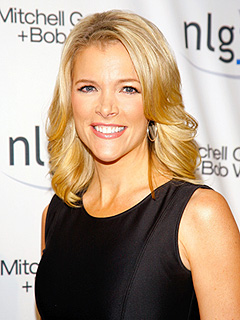In 2004, I returned from a year in Iraq to finish my undergraduate degree at the University of Rhode Island. Since I took more than a year’s leave of absence to deploy, I was forced to reapply to the university. While writing another entrance essay to explain how I spent my “year off,” I wondered why my school didn’t have a peer support system for its students who are veterans.
In just a few years, the narrative for veterans on my campus and many others has changed dramatically because of the hard work of student-led veterans’ groups like the ones I met at the recent Student Veterans of America national conference in Orlando.
The conference showed me how student veterans continue to look out for the best interests of their comrades on campus, much like they did in the military. Plus, as college veterans’ groups grow in size and influence, they manage to affect positive change in their communities. In January, veterans at Clemson University commissioned a volunteer-led veterans’ resource center where veterans can receive transitional assistance, career guidance, and peer support. Meanwhile, veterans at Florida State University continue to push the state legislature to change archaic in-state tuition policies.
Over a few beers, veterans opened up about some of the challenges they faced when coming back to college, like immature classmates or closed-minded professors, but they also readily shared ways they worked to build understanding on campus through their organized veterans’ groups.
Unfortunately, the conference also reinforced a lingering concern that many of today’s student veterans must still choose their schools and navigate the complexities of college life on the fly when they arrive on campus.
As an article in the Education Life section of The New York Times details, many colleges have stepped up to offer in-depth counseling to incoming student veterans, with some going so far as to offer orientation programs and learning communities specifically for veteran undergraduates. The one flaw to this system, however, is that at this point, the veteran has already chosen an institution. What if he or she just isn’t academically or financially ready for college?
In 2010’s National Survey of Veterans, more than 40 percent of post-9/11 veterans reported that they were not aware of and did not understand their education benefits. Veterans should be armed with quality information before they start the application process. Once a veteran is on campus, it may be too late. Is this lack of up-front information perhaps driving misconceptions that veterans won’t succeed when they arrive on campus?
When I started college more than a decade ago, I missed orientation because of basic training. I then struggled to find good information on using my benefits from the G.I. Bill of Rights and had to write a personal check just to get my grades. As a 19-year-old student who lived in a dormitory with few financial obligations, I had the time and the leftover Army income to foot the bill and sort out the G.I. Bill later. Many veterans don’t have this luxury.
So who should be responsible for informing veterans about the nuances of higher education? Federal law dictates that some of the responsibility falls on the military and the Department of Veterans Affairs. Separating service members have access to the military transition assistance program, or TAP, and those who have left active duty are entitled to free educational counseling from the veterans department. The department offers the 1-888-GIBILL-1 hotline and the eBenefits online portal, but neither is equipped to answer in-depth questions on higher education, nor can they be used to register for counseling.
I recently participated in both the Department of Veterans Affairs counseling and T.A.P. To apply for counseling, I had to find a form online, print it and mail it to my closest veterans affairs office. Two months later, I received a letter from a department contractor, asking me to take aptitude and interest tests to determine my career goals. The bubble sheet exams confirmed that I worked in the right industry, so I was finally referred to a counselor who could meet one on one.
The counseling process helped answer my questions, but I found some of the steps unnecessary and confusing, which likely discourages other veterans from using it too. Nevertheless, it worked. Wouldn’t the department want to enroll more veterans?
The agency only has about $6 million each year to deliver G.I. Bill counseling. Last year the Congressional Budget Office analyzed a proposal to make it easier for veterans to apply for educational aid, but the cost would have been high. During the recent conference, I asked the audience if anyone knew that the department even offered educational counseling. Only a couple of veterans raised their hands.
T.A.P. is not particularly helpful for veterans looking for information about education benefits. When I attended the benefits briefing last spring, the instructor focused on other veterans programs, such as health care, home loans and disability compensation, fielding dozens of questions along the way. When education benefits finally came up, the instructor was fighting the clock and glossed over the material, apparently assuming that service members understood the nuances of the highly promoted benefit. But clearly they do not.
Some T.A.P. facilities do better than others, offering resources like guidance counselors for separating service members. But these innovations seem to be have been developed at the discretion of individual program facilitators, and service members must carve out personal time to use them.
Still, my outlook for current student veterans remains overwhelmingly positive. Not only are veterans and colleges stepping up to take care of their own, but policy makers in Washington have recognized deficiencies in programs and are finally taking steps to fix some of them.
Thanks to the Vow to Hire Heroes Act of 2011, the Pentagon is piloting new T.A.P. curricula geared toward college-bound veterans. Because of an April executive order, the Pentagon, Department of Veterans Affairs and other federal agencies are compiling student outcome information and developing ways to track student feedback from colleges that are eligible for GI Bill students. Finally, because of last month’s Improving Transparency of Education Opportunities for Veterans Act, Congress has required the Department of Veterans Affairs to provide more information on how veterans are faring at individual colleges, and department is looking to deliver more cost-effective counseling tools for student veterans.
With all of these changes afloat, the veterans community must keep the pressure on the Pentagon, Department of Veterans Affairs, Congress and schools to ensure that educational information is relevant and easy to access for student veterans.
The first four-year class of Post-9/11 G.I. Bill veterans will graduate this spring, and I look forward to following their successes after college. For those still serving who plan to use their benefits in the future, we have an opportunity to arm them with the best information to get the most out of their G.I. Bill.
We never send a new recruit to war without proper training and equipment. We should never send a veteran to college without reasonable guidance for what lies ahead.
Ryan Gallucci is the deputy legislative director for the Veterans of Foreign Wars in Washington, where he focuses on economic opportunity policy for veterans and maintains the VFW’s Capitol Hill blog. He deployed to Iraq as an Army Civil Affairs specialist in 2003 and 2004 before completing his undergraduate studies at the University of Rhode Island in 2006.











